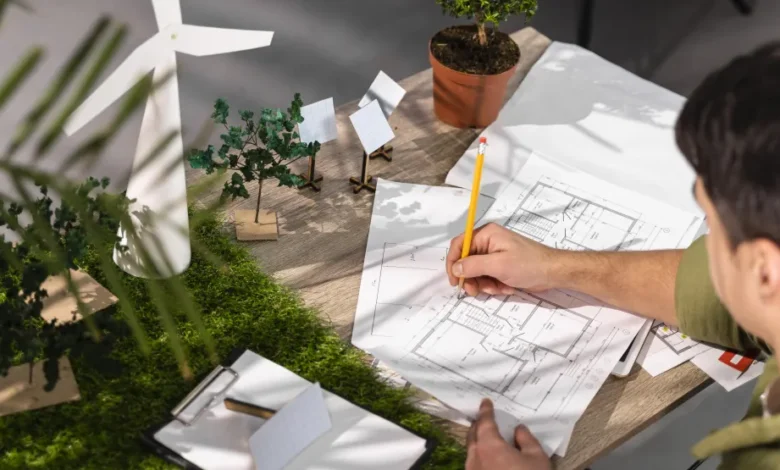Unlocking Potential: Residential Properties’ Adaptive Design

In the ever-evolving landscape of residential architecture, the concept of adaptive design has emerged as a beacon of innovation, offering a myriad of solutions to meet the diverse needs of homeowners.
This approach goes beyond mere aesthetics, focusing on versatility, inclusivity, and the ability to evolve over time.
Adaptive design in residential properties is not just about creating spaces; it’s about crafting environments that reflect and accommodate the changing dynamics of life.
This blog post delves into the transformative power of adaptive design, highlighting its benefits and the potential it unlocks for residential living.
Contents
The Essence of Adaptive Design
At its core, adaptive design is about flexibility and foresight. It involves creating spaces that can be easily modified to meet the changing needs of its occupants over time.
This could mean designing rooms that can serve multiple purposes, incorporating elements that cater to people of all ages and abilities, or using materials and technologies that make future renovations simpler and less disruptive. Adaptive design acknowledges that life is unpredictable, and our homes should be equipped to adapt along with us.
Versatility: A Space for Every Season of Life
One of the key advantages of adaptive design is its emphasis on versatility. Imagine a home where the layout can transform with ease, where a home office can become a nursery, or a basement can evolve into a vibrant entertainment area.
By utilizing movable walls, convertible furniture, and thoughtful spatial planning, adaptive design allows residential properties to morph as per the shifting priorities and lifestyles of its occupants. This versatility ensures that homes remain functional and relevant, providing spaces that grow and change with their inhabitants.
Inclusivity: Designing for Everyone
Adaptive design also champions the cause of inclusivity, ensuring that homes are accessible and comfortable for everyone, regardless of age or physical ability.
This approach incorporates principles of universal design, such as wider doorways, no-step entries, and user-friendly fixtures, making homes safe and accommodating for the elderly, children, and those with disabilities.
By prioritizing inclusivity, adaptive design not only enhances the quality of life for current residents but also ensures that homes can cater to a broader demographic, increasing their appeal and market value.
Sustainability: Future-Proofing Homes
Sustainability is another cornerstone of adaptive design, with an emphasis on creating homes that are not only flexible but also environmentally friendly.
This includes the use of energy-efficient materials, renewable energy sources, and designs that maximize natural light and ventilation.
By integrating sustainability into the fabric of adaptive design, residential properties can reduce their carbon footprint, lower utility costs, and contribute to a healthier planet. Additionally, these eco-friendly features make homes more appealing to environmentally conscious buyers, further future-proofing the investment.
Technology: The Smart Home Revolution
Advancements in technology play a pivotal role in unlocking the potential of adaptive design. Smart home systems, for example, offer unprecedented control over lighting, temperature, security, and entertainment systems, allowing residents to customize their living environment at the touch of a button.
Moreover, technological innovations such as modular construction and 3D printing are revolutionizing the way homes are built, enabling faster, more cost-effective adaptations to existing structures. As technology continues to evolve, so too will the possibilities for adaptive design in residential properties.
Enhancing Adaptive Design with Deck Installations in Utah
Incorporating deck installations is a fitting example of adaptive design’s versatility, particularly in the scenic landscapes of Utah. Decks not only extend the living space outdoors but also embody the principles of adaptive design by providing a multi-purpose area that can evolve with homeowners’ needs.
In Utah, where the natural backdrop varies from stunning mountain ranges to serene desert expanses, decks allow residents to seamlessly connect with nature, enhancing both the aesthetic and functional value of their homes.
Additionally, the use of sustainable, local materials for deck construction aligns with adaptive design’s emphasis on environmental responsibility, ensuring that these outdoor spaces not only serve current lifestyles but are also conscientious of their ecological impact.
Thus, deck installations in Utah exemplify how adaptive design can be both a practical and poignant addition to residential properties, fostering enhanced connectivity to the outdoors and a greater appreciation for the state’s natural beauty.
The Economic Advantage
Beyond the practical and aesthetic benefits, adaptive design offers significant economic advantages. Properties designed with adaptability in mind tend to have a longer lifespan, higher resale value, and greater appeal to a broad range of buyers.
For developers and homeowners alike, investing in adaptive design can result in substantial financial returns, making it a smart strategy in today’s competitive real estate market.
Conclusion
Adaptive design represents a paradigm shift in residential architecture, one that prioritizes flexibility, inclusivity, sustainability, and technological integration.
By embracing this approach, residential properties can unlock their full potential, offering spaces that are not only beautiful and functional but also capable of evolving with the times.
Whether through versatile layouts, inclusive features, eco-friendly practices, or the incorporation of smart technology, adaptive design is paving the way for a new era of residential living—one that is ready to meet the challenges and opportunities of the future head-on.